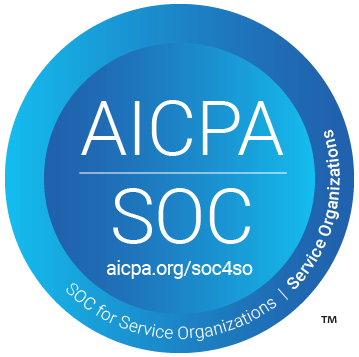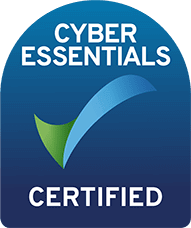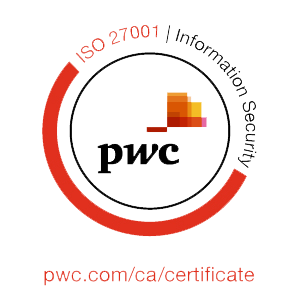No items matched this filter. Please try another.
Best Security Practices to Enforce
Security threats are increasing in number and complexity in every department of the organization, not just IT. In order to protect themselves from security risks and prevent security incidents from occurring, organizations should develop a security program based on a strong set of policies. Read this guide to learn key security policies and tips for implementing a security program.
Differences Between Policies and Procedures
Policies and procedures are vital documents in business. They add structure to an organization and act as guidelines for employee conduct. Although they both direct employee behavior, policies and procedures serve different functions and are best managed as distinct documents. Read this guide to learn the key differences between policies and procedures.
Effectively Manage your HR Policy Portfolio
Robust policies are crucial to all HR functions and keeping them organized saves money, increases productivity, and avoids potential legal liability. Despite the importance of policies, many organizations are struggling to manage their human resources policies and procedures in a way that works. Use myPolicies' complete guide to Effectively Manage the HR Policy Portfolio to build a robust HR policy portfolio and free up HR's time.
Employee Compliance Training
Effective corporate policies are critical to mitigating organizational risk. However, these policies fail to properly protect an organization if employees do not comply. Non-compliance can directly hurt an organization and open it up to the risk of legal and regulatory costs. In order to ensure policies are providing the protection needed, organizations must ensure employees are effectively trained on policy compliance. Read this guide to discover more about the importance of compliance and the steps toward implementing an employee compliance training program.
Four Common Acceptable Use Policies
Acceptable use policies are essential for organizations and corporations. They add structure to businesses by outlining the responsible use of technology by end users. They also work to protect corporate data, increase productivity and prevent exposure to litigation. Writing strong acceptable use policies is crucial to maintaining structure in your organizations. Read this guide to learn the four most common acceptable use policies and how to write them.
How to Build an Effective and Efficient Policy Management Process
Policies and procedures are an essential part of day-to-day operations for any organization. However, policy creation can be needlessly complex and disjointed. Our how-to guide provides you with all the necessary steps you'll need to build an effective and efficient policy management process.
How to Create a Document Retention Policy
A sound document retention strategy is critical to organizational risk mitigation. Failure to retain important business documents can lead to costly fines or expensive legal cases. Certain documents must be retained for legal reasons, while others simply create clutter and can be purged. To standardize which documents are retained, how they are retained, and for how long, organizations should implement a document retention policy. Read this guide to learn how to create an effective document retention policy.
How to Create a Social Media Policy
A company’s relevancy and success is measured by their influence in the digital world. Social media, in particular, is an indicator of an organization's rank in the global digital market. Incorporating social media into your organization’s marketing initiatives means that you must create a policy to govern the way employees interact with the company’s interactive platforms. Read this guide to learn the basics of developing a social media policy that will help increase brand awareness and improve client relations.
How to Develop Strong Policies
Developing strong and effective policies is essential for mitigating risks in the policy management process. The development phase sets the foundation for building clear and consistent policies that will mitigate organizational risks. Read this guide to learn the step-by-step process to developing effective policies that will gain approval from stakeholders.
How to Write an Effective Policy
Policies are a critical part of any organization. They inform an organization’s culture, influence employee behaviour, and govern the internal structure of a corporation. A poorly written or out-of-date policy can have detrimental consequences for your organization and lead to legal and financial burdens. Writing strong corporate policies is one of the best ways you can take protective action for your organization and its employees. Read this guide to learn the basics of writing a strong policy that is comprehensive, clear, and accurate.
Info-Tech's Risk-Based Approach to Identifying Policy Needs
Organizational risks are constantly changing, and it is very important for policies to accurately reflect these risks. Risk landscapes must be continuously reassessed and policies adjusted accordingly to ensure they are meeting organizational needs. To help establish policy priorities and mitigate corporate risks, myPolicies recommends a risk-based approach. This risk-based approach to identifying policy needs was developed by our parent company, Info-Tech Research Group. Read this article to learn you can use our risk-based approach to achieve policy initiatives.
Is a Policy Management Tool Right for You?
Policy management is often not seen as a priority, however, maintaining strong policies is becoming more and more important for organizations. A well-managed policy portfolio has the potential to positively impact organizational culture, governance, and compliance while establishing employee expectations and saving the organization time. With a risk landscape that is constantly evolving, it is becoming more important for organizations to keep up with the latest policy management trends and solutions. This article details the functionality provided by policy management tools, and helps you to determine if a policy management tool is right for your organization.
Policy Communication Tips
When it comes to policy compliance, communication of a policy is almost as important as the policy itself. Whether you’re reaching out to new or existing employees, having a communication plan is a necessary strategy to help ensure end users are both aware and compliant with your policy initiatives. Read this article to learn how to build a strong communication plan that will assist in policy compliance.
Policy Enforcement and Monitoring
Strong policies are critical to any organization, but policies can only be effective if they are strongly enforced. Even well-written policies will fail to protect an organization and its employees if they are not enforced. To increase compliance, organizations must take their stakeholders into consideration by communicating policies to both management and employees. Read this guide to learn the steps to successful policy enforcement and monitoring.
Policy Governance Structure
A policy development process is crucial for the effective implementation of corporate policies. Following a standardized policy governance structure ensures all policy initiatives are organized and well maintained. To reduce the administrative burden of policy management, myPolicies has developed a Policy Governance Structure that defines the roles and outlines the responsibilities of key stakeholders in the policy development process. Read this article to learn best-practice tips for every role in this structure
Policy Management Trends
Today’s policy professionals are faced with a highly complex risk landscape that is driven by a growing number of regulatory changes and technological advances. As a result, the need for effective policy management has never been higher. Read this report to learn how to effectively manage policies and protect your organization from liability.
Prepare for the Policy Storm That is Coming
Everything we have seen throughout the COVID-19 pandemic, from lock downs to supply shortages, to returning to work, has required enormous amounts of governance. Many businesses address these immediate changes by writing policy after policy without any thought to how difficult this entire process can be.
The Other Side of Travel Policies
A well-written and comprehensive corporate travel policy is essential for any organization that engages in regular business travel. Unfortunately, many organizations fail to consider a very important element of travel when drafting this policy: employee safety and security. This article explores this often ignored element and provides organizations with a guide to drafting a strong corporate travel policy that considers employee safety and security.
Tips for Developing a BYOD Policy
Today’s workforce is becoming more and more mobile, making it increasingly important for organizations to adequately manage mobile devices. With the increase of personal mobile devices in the workplace, organizations must ensure they are used effectively. To best manage mobile devices, implement a Bring Your Own Device policy (BYOD) to allow employees to use personal devices for work purposes. Read this guide to learn how to develop a BYOD policy.
Tips for Measuring Policy Program Metrics
In a business world that is constantly evolving, it has become extremely important for organizations to monitor their policies to ensure they do not lag behind business needs. Policies should be continually monitored for relevance and validity and updated accordingly. In order to properly monitor and update their policies, it is crucial for organizations to establish and evaluate key policy program metrics. Read this article to learn more about why measuring policy program metrics is important and how organizations should monitor their policy libraries.
What Makes a Good Policy Statement?
Strong corporate policies are critical to protecting organizations from risk, and strong policy statements are critical to maintaining effective corporate policies. Policy statements are at the core of any corporate policy and well written policy statements have the potential to protect an organization where poor policy statements cannot. Policy statements should be easily understood and offer adequate risk protection to the organization. Read this guide to learn the basics of writing effective policy statements that help to create valuable corporate policies.


